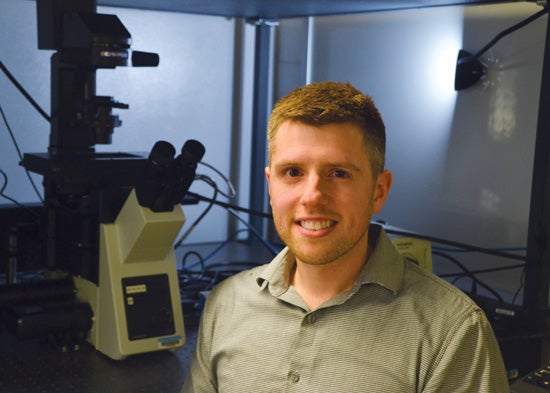Going Nano in the Fight Against Cancer

Imagine being able to see the signs of cancer decades before we can now. URI Chemical Engineering Assistant Professor Daniel Roxbury and researchers from Memorial Sloan Kettering Cancer Center have invented a technique that could detect a wide range of biomarkers that signal the start of cancer—many years before symptoms surface.
MicroRNA, a nucleic acid like DNA, is present in plants and animals. Out of the thousands of identified sequences, a subset is highly elevated in a number of human cancers. They’re found in blood, urine and saliva, and detecting them is a high priority for biomedical researchers.
At present, detecting them from a blood test, for example, requires going to a clinic. Roxbury and the other researchers have their sights set on continuous home monitoring that could generate automatic alerts. Using carbon nanotubes—tiny needle-like hollow cylinders that are 100,000 times smaller than a strand of human hair—they have engineered nano-biosensors that can easily be implanted under skin. The procedure is relatively noninvasive compared to, say, surgical biopsy.
“We could detect a signal from deep within a mouse,” Roxbury reports.
The study, funded by the National Institutes of Health and the American Cancer Society, was reported this spring in the journal Nature Biomedical Engineering. “It’s certainly a monumental step,” says Roxbury. “The next stage would be to construct some kind of wearable device, maybe a wristwatch, that incorporates this technology.”
 Home
Home Browse
Browse Close
Close Events
Events Maps
Maps Email
Email Brightspace
Brightspace eCampus
eCampus


